1. Practices
1.1. intro
1.2. What
1.2.1. Pair Programming
1.2.2. Common Code Ownership
1.2.3. Behaviour Driven Development (BDD)
1.2.3.1. Bridging the Communication Gap by Gojko Adzic
1.2.3.2. http://dannorth.net/introducing-bdd/
1.2.4. Test Driven Development (TDD)
1.2.4.1. intro
1.2.5. Refactoring
1.2.5.1. Intro
1.2.5.2. Refactoring: Improving the Design of Existing Code : Martin Fowler, Kent Beck et al
1.2.6. Continuous Delivery
1.2.6.1. Continuous Delivery : Jez Hunble
1.2.7. Continuous Integration (CI)
1.2.8. Simple Design
1.2.9. Cross-functional teams
2. Lean
2.1. Lean Primer
3. Agile Requirements
3.1. Who
3.1.1. Product Owners
3.1.2. BA
3.1.3. QA
3.2. What
3.2.1. 3Cs
3.2.1.1. http://xprogramming.com/articles/expcardconversationconfirmation/
3.2.1.2. http://www.agileforall.com/2010/05/new-to-agile-remember-a-user-story-is-more-than-a-card/
3.2.1.3. http://agileatlas.org/articles/item/user-stories
3.2.2. User Stories
3.2.2.1. http://johannesbrodwall.com/2012/03/12/how-to-grow-a-user-story/
3.2.2.2. http://www.mountaingoatsoftware.com/agile/user-stories
3.2.2.3. http://en.wikipedia.org/wiki/User_story
3.2.2.4. User Stories Applied by Mike Cohn
3.2.3. INVEST
3.2.3.1. http://guide.agilealliance.org/guide/invest.html
3.2.3.2. http://xp123.com/articles/invest-in-good-stories-and-smart-tasks/
3.2.4. Acceptance Tests
3.2.4.1. http://www.richard-banks.org/2008/10/using-mind-mapping-to-capture-user.html
3.2.4.2. http://nomad8.com/acceptance_criteria/
3.2.4.3. http://dannorth.net/whats-in-a-story/
3.2.4.4. http://dannorth.net/introducing-bdd/
3.2.5. Splitting Stories
3.2.5.1. http://agileforall.com/new-story-splitting-resource/
3.2.5.2. http://gojko.net/2012/01/23/splitting-user-stories-the-hamburger-method/
3.2.5.3. http://www.agileproductdesign.com/blog/the_shrinking_story.html
3.2.5.4. http://simpleprogrammer.com/2011/11/21/understanding-the-vertical-slice/
3.2.5.5. http://xp123.com/articles/twenty-ways-to-split-stories/
3.2.5.6. http://www.christiaanverwijs.nl/post/2013/05/17/8-useful-strategies-for-splitting-large-user-stories-(and-a-cheatsheet).aspx
3.3. When
3.3.1. Before building backlogs
3.4. Duration
4. Learning Pathway
4.1. Agile Newbie
4.1.1. Intro to agile
4.2. ScrumMaster / Agile Coach
4.2.1. Responsibilities
4.2.1.1. Ensuring adherence to the Scrum process
4.2.1.2. Removal of impediments
4.2.2. What does a ScrumMaster do?
4.2.3. How do I work with the other Roles in Scrum?
4.3. Product Owner
4.3.1. Responsibilities
4.3.1.1. ROI (scrum definition)
4.3.1.2. Managing stakeholders
4.3.1.3. Maintain the Product Backlog
4.3.1.4. Determines 'what' needs to be done
4.3.2. How do I work with the other Roles in Scrum?
4.4. Developer / Development Team
4.4.1. Responsibilities
4.4.1.1. Determines 'how' to deliver the desired functionality
4.4.1.2. Creates the Sprint Backlog
4.4.2. How do I work with the other Roles in Scrum?
4.4.3. Role
4.4.3.1. Agile Team Member
5. Agile Planning
5.1. Relative Estimation
5.2. Agile Feature Estimation
5.3. Release Planning
5.4. Iteration Planning
5.5. Agile Estimating and Planning by Mike Cohn
6. Metrics
6.1. Velocity
6.2. Story Points
6.3. Burndowns
7. Manifesto
8. Scaled Frameworks
8.1. SAFe
8.2. LeSS
8.3. DSDM
9. Frameworks
9.1. Scrum
9.1.1. Roles
9.1.1.1. Intro
9.1.1.2. Product Owner
9.1.1.2.1. Role Focussed Training
9.1.1.2.2. Certified Training
9.1.1.3. ScrumMaster
9.1.1.3.1. Role Focused Training
9.1.1.3.2. What does a ScrumMaster do?
9.1.1.3.3. Certified Training
9.1.1.4. Development Team
9.1.2. Events
9.1.2.1. Sprint Plannng
9.1.2.2. Sprint
9.1.2.3. Daily Scrum
9.1.2.3.1. Incentivising Attendance
9.1.2.4. Sprint Review
9.1.2.4.1. How to
9.1.2.5. Retrospective
9.1.2.6. Backlog Refinement
9.1.3. Artefacts
9.1.3.1. Product Backlog
9.1.3.2. Sprint Backlog
9.1.3.3. Product Increment
9.1.4. Definition of Done
9.1.5. Training Materials
9.1.5.1. Suitable For
9.1.5.1.1. Newbies
9.1.5.2. What
9.1.5.2.1. BYOS
9.1.5.2.2. Scrum Simulation with Lego
9.1.6. Resources
9.1.6.1. Scrum Primer
9.1.6.2. The Scrum Guide
9.1.7. Working Agreements
9.1.8. Values
9.1.8.1. Focus
9.1.8.2. Openness
9.1.8.3. Commitment
9.1.8.4. Courage
9.1.8.5. Respect
9.2. XP
9.2.1. XP Game
9.2.2. Extreme Programming Explained : Kent Beck
9.2.3. Values
9.2.3.1. Communication
9.2.3.2. Simplicity
9.2.3.3. Feedback
9.2.3.4. Courage
9.2.3.5. Respect
9.2.3.6. Others
9.2.4. Principles
9.2.4.1. Humanity
9.2.4.2. Economics
9.2.4.3. Mutual Benefit
9.2.4.4. Self-Similarity
9.2.4.5. Improvement
9.2.4.6. Diversity
9.2.4.7. Reflection
9.2.4.8. Flow
9.2.4.9. Opportunity
9.2.4.10. Redundancy
9.2.4.11. Failure
9.2.4.12. Quality
9.2.4.13. Baby Steps
9.2.4.14. Accepted Responsibility
9.2.5. Who
9.2.5.1. New members of an XP team
9.2.6. Practices
9.2.6.1. Primary
9.2.6.1.1. Sit Together
9.2.6.1.2. Whole Team
9.2.6.1.3. Informative Workspace
9.2.6.1.4. Energised Work
9.2.6.1.5. Pair Programming
9.2.6.1.6. Stories
9.2.6.1.7. Weekly Cycle
9.2.6.1.8. Quarterly Cycle
9.2.6.1.9. Slack
9.2.6.1.10. Ten-Minute Build
9.2.6.1.11. Continuous Integration
9.2.6.1.12. Test-First Programming
9.2.6.1.13. Incremental Design
9.2.6.2. Corollary
9.2.6.2.1. Real Customer Involvement
9.2.6.2.2. Incremental Deployment
9.2.6.2.3. Team Continuity
9.2.6.2.4. Shrinking Teams
9.2.6.2.5. Root-Cause Analysis
9.2.6.2.6. Shared Code
9.2.6.2.7. Code and Tests
9.2.6.2.8. Single Code Base
9.2.6.2.9. Daily Deployment
9.2.6.2.10. Negotiated Scope Contract
9.2.6.2.11. Pay-Per-Use
9.3. Kanban
9.3.1. Kanban : David J. Anderson
9.3.2. Kanban Pizza Game
9.3.3. GetKanban Board Game
9.3.4. WIP
9.3.5. Values & Principles
9.3.6. Principle of flow
